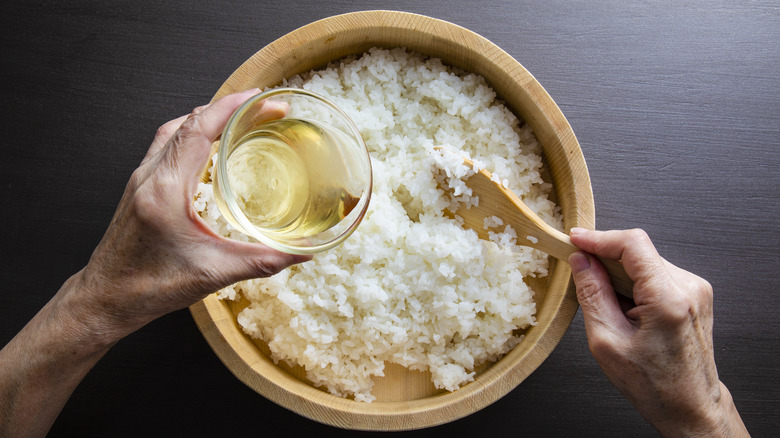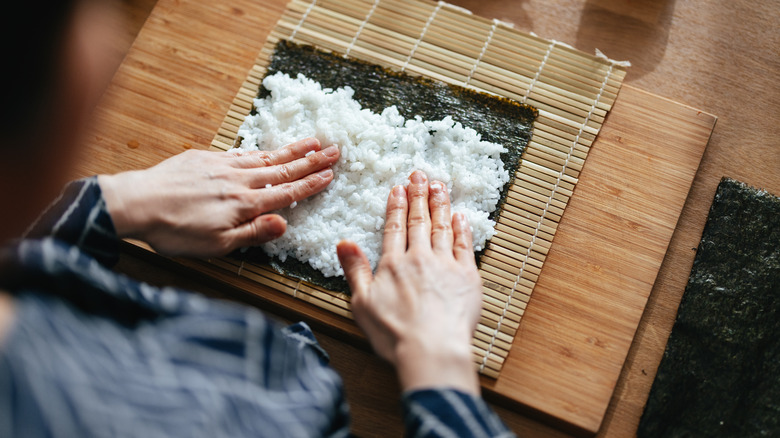The Temperature Mistake You Might Be Making With Sushi Rice
Making your own sushi can feel like a huge accomplishment — if you get it right. If you find that your favorite sushi rolls aren't as good when you make them yourself, rice that's either too cold or too hot may be the culprit.
Using the wrong kind of rice is a typical beginner's mistake when preparing sushi, but even if you use proper sushi rice, you must keep an eye on its temperature. This rice must be cooked before you can start rolling or shaping it, and you should let it cool for around 10 to 15 minutes or until it reaches room temperature. If it's refrigerated or left out long enough to become fully cold, it won't absorb vinegar as effectively. If the vinegar slides off, your rice will be a bit slimy and difficult to work with, and it won't take on the vinegar's flavor. Instead, your sushi may taste salty, as you're essentially eating cold rice seasoned only with salt. The texture will also suffer, as each bite will likely be unpleasantly chewy.
If you're frying your sushi rice to make a rice cake, letting the rice get cold will make it harder to mold and will prevent it from keeping its shape. Additionally, it may burn if it has cooled to the point of drying out. In this instance, it's preferable to keep your rice slightly warm.
What happens if you make sushi with hot rice?
You may be tempted to skip the cooling step when making sushi altogether, but under no circumstances should you start prepping while the rice is still hot. Potential hand burns aside, applying cold or lukewarm neta (toppings) to hot shari (vinegared sushi rice) will create a temperature mismatch within each bite.
The heat may also impact the toppings' flavor and texture, and it may cause moisture to seep into the nori (seaweed) if you're using it. The hot rice, primed to absorb liquid, may also soak up too much of the vinegar. The effects of this are twofold: The dish will taste pungent instead of gently refreshing, and your sushi won't last as long, as a typical vinegar coating acts as a preservative.
If you find that your sushi rice has indeed gone cold, or if you prepped the rice in advance, you can always reheat it. Sprinkle it with some water so it doesn't dry out during the process (you'll still need a bit of moisture so you can roll it!) and gently heat it on the stove or in the microwave. If you have a bamboo mat, you can follow a typical Japanese reheating method: Spread your sushi rice across the bamboo mat, boil some water in a pan, turn the heat to low, and place the mat over your pan. The water's vapor will gently steam your rice, making it ready to roll.

